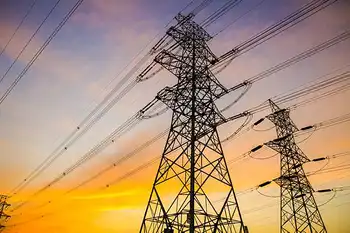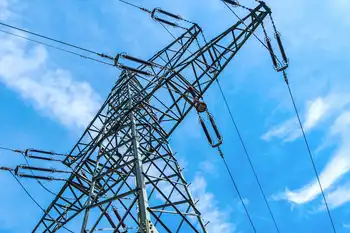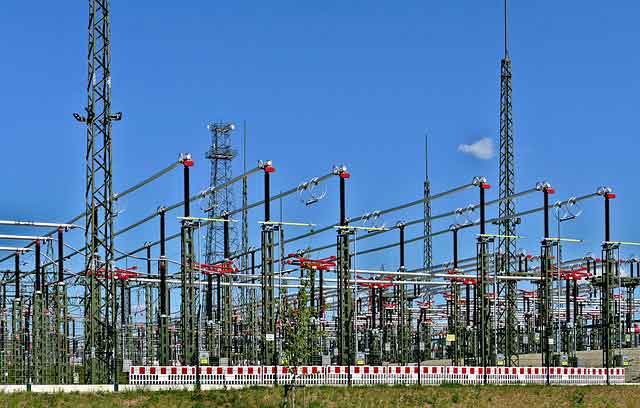Nuclear safer than coal, says Chinese officials
BEIJING, CHINA - Even in the wake of Japan's Fukushima nuclear crisis, nuclear power remains a safer and cleaner choice for China than coal, Pan Ziqiang, the chairman of the science and technology committee at the China National Nuclear Corporation, said.
Before Japan's earthquake and tsunami, Beijing was bullish about the prospects of nuclear power in China, fast-tracking the approval of dozens of reactors along the coast as part of a wider plan to ease dependence on heavily-polluting fossil fuels.
Since the quake, China has been at pains to show that its existing nuclear facilities are completely safe, and has already suspended all new project approvals pending a nationwide inspection into reactors and construction sites.
China's cabinet, the State Council, also said it would also "adjust and improve" its plans for the sector.
"We've recently drawn up recommendations saying that these inspections announced by the State Council are completely necessary, but I personally believe that the nuclear power development plan should not be changed," Pan, an industry veteran of nearly 60 years, told reporters in Beijing.
"Everybody knows atmospheric pollution from coal is very serious.... Nuclear basically has no harmful pollutants and greenhouse gas emissions are 1 percent of a coal-fired power plant."
Many of the projects currently under construction use tried and tested designs from Russia, France, Canada and the United States, but China will also build the world's first "third-generation" AP1000 reactor, built by U.S.-based Westinghouse, a unit of Japan's Toshiba Corp.
China will also be one of the first countries to build new European Pressurized Reactors designed by France's Areva, prompting critics to claim that China has become the testing ground and shop window for unproven technologies.
Pan said the dangers had been exaggerated.
"From a safety perspective, up to now China has never had an incident higher than level 2. From the 1950s when development began, there hasn't been a single death caused by radiation — not one — and there hasn't been a single fatal disease caused by radiation. Of course, there have been skin burns, and 10 people were killed in a work accident in 2007, but this is very far from the amount of deaths from China's coal industry."
Japan's Fukushima nuclear accident has been rated at level five on the IAEA's nuclear event scale, the same as the fire that destroyed the core of Britain's Windscale nuclear plant in 1957, but lower than the level seven accident at Chernobyl in 1986.
Pan said the impact of the Chernobyl accident, the worst in the industry's history, had also been exaggerated. He noted that a World Health Organization report in 2005 put total fatalities at 56, far lower than had previously been estimated, and found no evidence of increased cancer risks apart from an initial spike in thyroid cancer among children drinking contaminated milk.
"We need to adopt stricter management and strengthen the safety culture and our monitoring but I think we should accept nuclear development."
China's official capacity target still stands at 40 GW by 2020, but many in the industry — including Pan — have said a target of more than 80 GW would be feasible.
Officials from both the government and its two state-owned nuclear contractors have stressed that China's plants are far more advanced than Japan's stricken Fukushima complex, which was first commissioned four decades ago.
China's coastline is also less vulnerable to the sort of catastrophic tsunami that struck northeast Japan, they have said.
There have been no serious safety accidents at China's existing nuclear projects, but the scale of its future plans has alarmed experts worried about a shortage of qualified technical staff as well as a lack of transparency.
The China Guangdong Nuclear Power Corporation opened its Daya Bay nuclear facility to selected journalists from nearby Hong Kong. International media were not invited to participate.
Rumors of leaks from the plant last year led to protests in Hong Kong, and the company promised to be more transparent when it came to monitoring possible radiation problems in the region.
Related News

Trump Is Seen Replacing Obama’s Power Plant Overhaul With a Tune-Up
WASHINGTON - President Barack Obama’s signature plan to reduce carbon dioxide emissions from electrical generation took years to develop and touched every aspect of power production and use, from smokestacks to home insulation.
The Trump administration is moving to scrap that plan and has signaled that any alternative it might adopt would take a much less expansive approach, possibly just telling utilities to operate their plants more efficiently.
That’s a strategy environmentalists say is almost certain to fall short of what’s needed.
The Trump administration is making "a wholesale retreat from EPA’s legal, scientific and moral obligation to address the threats of climate…




